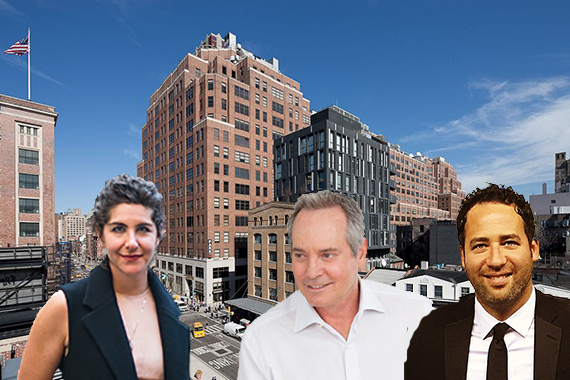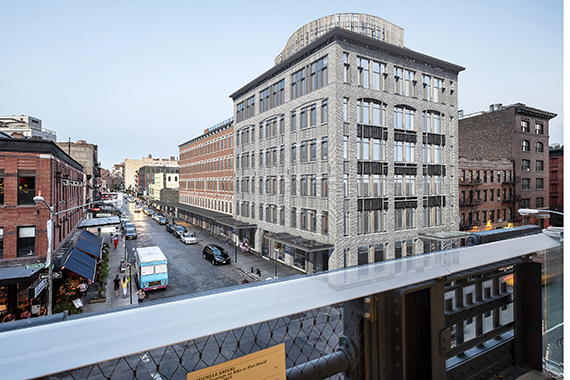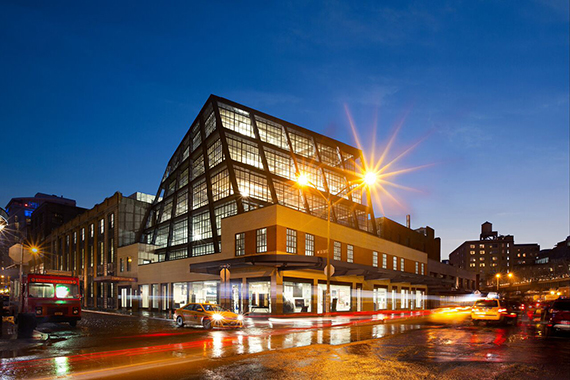Trending
Will the newly formed Meatpacking BID take sides on new development?
Group says it has "no intention of being a political force"

The Meatpacking District can be summed up in one simple, somewhat clumsy, image: “high heels on cobblestone.”
At least, that’s the picture marketers are hoping to summon in a new branding campaign for the neighborhood, one that emphasizes the marriage of its industrial past and its modern sheen. A website for the area’s new Business Improvement District describes the Meatpacking District as chic yet gritty, dynamic but respectful of history.
“It is a physically magnificent part of New York,” said Paul Pariser, co-head of Taconic Investment Partners, which owns the Apple-anchored 401 West 14th Street. “We want to preserve the history, and preserve the beauty, but stay current with the visitors and tenants.”
The meat markets and slaughterhouses that earned the area its moniker are now far outnumbered by chic retail stores and nightclubs. The neighborhood is entering a new era of development, and it’s not yet clear how frequently the Meatpacking District’s new BID, tasked with striking a balance between preserving history and spurring commerce, will step in to either support or oppose these new projects.
The City Planning Commission approved the BID in January 2015, defining its boundaries as Horatio StreetBetween Hudson Street and 10th Avenue; Eighth Avenue From Horatio Street to 17th Street; 10th Avenue from Horatio Street to 13th Street; 11th Avenue between 13th Street and 16th Street; and 17th Street between 10th and Eighth avenues. All told, the BID represents about 7.3 million square feet of space in one of the city’s hottest neighborhoods.

Rendering of 60-74 Gansevoort Street (credit: BKSK)
The neighborhood, now anchored by the new Whitney Museum, may soon be home to some large-scale development projects. Aurora Capital Associates and William Gottlieb Real Estate plan to renovate and convert nine buildings along Gansevoort Row — 46-74 Gansevoort Street — which would create nearly 111,000 square feet of commercial space. The project has drawn the ire of some community members who argue that the stretch of street is one of the last vestiges of the district’s history. Members of the group, dubbed Save Gansevoort, didn’t return messages seeking comment on the BID.
The question of getting involved in development — whether that means supporting or opposing projects in the neighborhood — is a somewhat thorny one for members of the BID. On the one hand, voicing an opinion about development can seem guided by those who have skin in the game — many of the BID’s board of directors are the developers behind these projects, similar to the dynamic seen in BIDs across the city.
“It’s not our intention to be a political force,” said Lauren Danziger, the BID’s executive director. “We’re here to support the neighborhood.”
But the BID also aims to promote business in the neighborhood, and often, new development is an effective way to lure prospective tenants. What if the BID thinks a project is in the best interest of the district? The board’s answer was to straddle the line: They don’t anticipate, as a uniform body, to support certain development projects, but they are also leaving the door open to doing so in the future. Danziger said the BID will consider projects on a case-by-case basis.
“We’re a new organization, and it’s important to recognize that there will be things down the road that will impact this neighborhood,” she said. “We didn’t want to take that option off the table.”

837 Washington Street in the Meatpacking District (credit: Meatpacking DMA)
Jared Epstein is secretary of the BID’s board and vice president of Aurora Capital Associates, which owns roughly 500,000 square feet of property in the Meatpacking District including, 46-74 Gansevoort Street and 21-27 Ninth Street. Epstein said he wouldn’t want to create the perception of nepotism or bias by trying to convince the BID to support his company’s projects.
“It would actually make it uncomfortable,” he said. “However, I think it would be appropriate for members of the BID, if they personally believed that our projects had merit and should be developed, that they should be able to come out and support the projects personally or as part of their company.”
Cliff Meilman, whose family has owned property in the district since the height of its meat distribution days and who serves as the vice chair of the BID, said the organization needs to carefully consider how it acts as a group.
“I think that the organization needs to be very thoughtful about what we deem is the best interest of the neighborhood, whether that be for profit or not for profit,” he said. “The neighborhood is a very, very good mix of businesses and the community around us. People are pretty passionate in this neighborhood about a lot of different things, and it’s important that we get these things right.”
The BID evolved from two local organizations: the Meatpacking Improvement Association, which formed in 2010, and the Meatpacking District Initiative, a merchant group that was created roughly a decade ago. The MPIA continued the work of the MPDI and also took on BID-like services, such as beautification efforts along Ninth Street, Danziger said. Danziger ran the MPIA and a similar group, the Chelsea Improvement Company, which merged in 2014 to form an organization that will complement the neighborhood’s new BID, by helping to raise funds for programs and by providing services to areas surrounding the BID.
The newly formed BID’s first annual budget is an estimated $1.6 million, which means property owners pay roughly 22 cents per square foot for their annual assessment, the fee that together covers a majority of the organization’s expenses. Annual assessments across New York City’s 70 BIDs in 2014 ranged from $53,000 for the 180th Street BID to more than $15 million for the Downtown Alliance. The Meatpacking BID takes in About As Much As The Madison Avenue and Fulton Mall BIDs do. Unlike in merchant associations, BIDs have a guaranteed source of income — the assessment — paid by property owners based on square footage of land owned.
The permanent board of directors will be voted on during the group’s annual meeting, slated to happen between April and June. One of the BID’s first actions include adding unarmed guards in the neighborhood, who will conduct late-night patrols on Thursdays, Fridays and Saturdays, Danziger said. The group’s stated overall goal is to be an advocate for the neighborhood and an intermediary with the city.
“We’re kind of the parent,” Danziger said. “We’re trying to find what’s best for a neighborhood that’s growing up and changing every day.”




